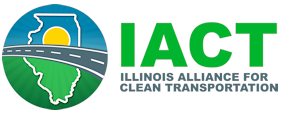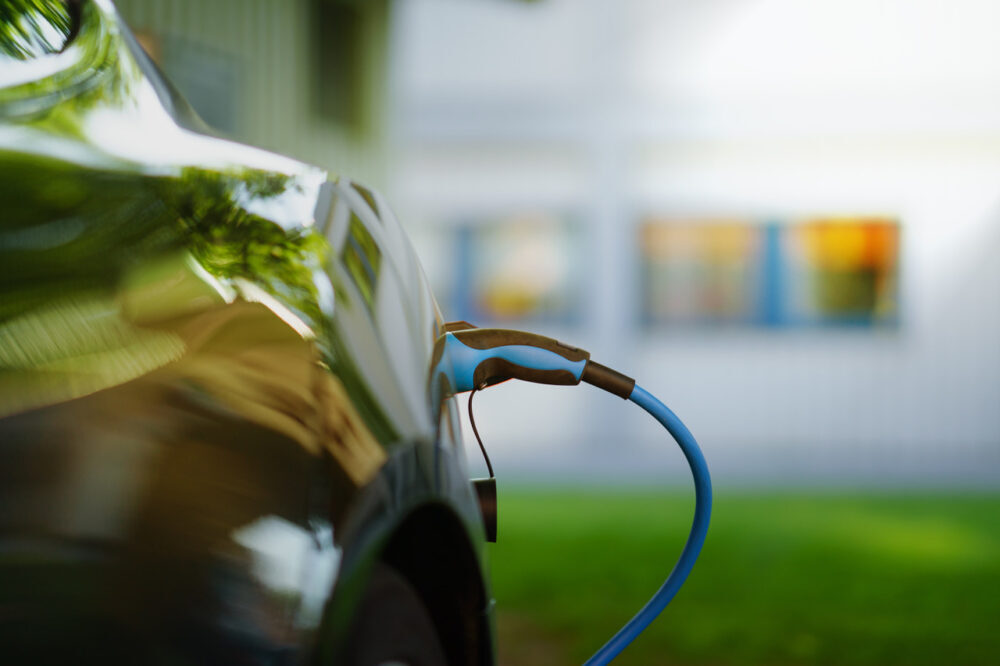Chicago Area Clean Cities, the American Lung Association and Greater Indiana recently co-hosted the “Road to Emission Reductions: Path to Electric Vehicles Virtual Conference.” The conference highlighted the current situation of emission reductions, EV charging standards, battery technologies, and policy. Nearly 100 people attended the day-long conference.
During the program, Harold Wimmer, President and CEO of the American Lung Association, talked about the challenges ahead in combating air pollution, and he also talked about successes that have been achieved over the past 50 years, since the Clean Air Act was originally passed.
 “Many Americans may not realize that air pollution can be deadly,” Wimmer said. “It can cause lung cancer, worsen asthma, and even trigger heart attacks and stroke. Air pollution also increases the risk of lung disease, dementia as well as premature birth or low birth weight in newborns.”
“Many Americans may not realize that air pollution can be deadly,” Wimmer said. “It can cause lung cancer, worsen asthma, and even trigger heart attacks and stroke. Air pollution also increases the risk of lung disease, dementia as well as premature birth or low birth weight in newborns.”
Wimmer said that the good news is that under the Clean Air Act, “we have healthier air, lives have been saved, and public health has improved. Thanks to that law and later amendments that strengthened it, people throughout the nation breathe cleaner, healthier air.”
Wimmer said the transportation sector, including cars and trucks, is a major source of air pollution. He cited the following:
- Since 2000, the number of U.S. motor vehicles has increased by approximately 50 million.
- Nearly half of Americans continue to live with unhealthy air, with significant disparities in air pollution exposure for communities of color.
- Up to 45% of the urban population in North America may be within close enough proximity to major roadways to increase immediate negative health outcomes, including causing asthma attacks in children and increasing risk of childhood asthma, impaired lung function, and premature death.
“The key for a healthy future is innovation, and the transportation sector is an important area where we can improve air quality and save lives, especially those communities most impacted and vulnerable to pollution burdens,” Wimmer said.
More than 25 presenters spoke at the EV conference in mid-September, including government officials from Illinois and Indiana, representatives from Argonne National Laboratory, Cummins, Inc., General Motors, GTI, Hyzon Motors, and Pace Suburban Bus, as well as leaders of nonprofits in Illinois and Indiana.
Presenters addressed how the availability of renewable alternative fuels and advances in automobile technologies plays a critical role in decreasing harmful road emissions. Most agreed that electric vehicles are only a part of the solution, and not the only solution, to greatly reducing emissions.
“There are many fuels, vehicles, and technologies currently available right now that can continue to be used to reduce vehicle emissions until we can reach carbon free, including biodiesel, ethanol, natural gas, propane, hybrids, and anti-idling technologies, to name a few,” said John Walton, chair of Chicago Area Clean Cities. “We are reducing emissions with all of these today. All of these technologies should be encouraged until we can get to be where we want to be in the future.”
During his remarks, Wimmer highlighted the American Lung Association’s 2020 report “The Road to Clean Air.” The report explored the public health and climate change benefits of transitioning passenger vehicles, transit and school buses, delivery vans and the broad trucking sector away from combustion and toward electric vehicles, coupled with an increasingly renewable energy sector.
The Lung Association’s report said nationally, electric vehicle usage could yield up to $72 billion in avoided health costs and $113 billion in avoided climate change impacts in 2050, when compared with a fleet of combustion vehicles. In the Midwestern states, 2050 emission reduction benefits reach $12 billion in avoided health costs, including $3.2 billion in Illinois and $1.1 billion in Indiana, 1,000 avoided premature deaths, 16,000 avoided asthma attacks, and 68,000 avoided lost workdays.
American Lung Association projects Wimmer cited include:
- Midwest EVOLVE, which stands for Electric Vehicle Opportunities: Learning, eVents, Experience. Launched in early 2017, the project and its partners have held or participated in more than 300 events across the Midwest to promote the environmental and health benefits of electric vehicles.
- B20 Club: A partnership between the Illinois Soybean Association (ISA) and the American Lung Association, the B20 Club recognizes a select group of Illinois-based organizations with strong commitments to run fleets on biodiesel blends of 20 percent or greater. Since the Club’s formation in 2015, member fleets have used more than 33.25 million gallons of B20 biodiesel, providing an estimated 6.8 million dollars in health benefits to local communities due to prevented health impacts and lost workdays.
- USEPA Clean Diesel program: Partners with USEPA and independent diesel fleet owners to modify legacy vehicles with control technology to reduce diesel emissions. The American Lung Association has assisted 13 fleets in Illinois for this program and 59 in Indiana.
- Illinois Clean Air Now (ICAN) is a coalition comprised of clean energy, health advocacy and transportation industry stakeholders.
“Each of these projects and partnerships offer a real ‘Clean Air Choice’ that everyone can make right now,” Wimmer said. “These actions provide measurable emission reductions to benefit air quality and improve lung health.”
Wimmer added: “We have accomplished a lot, but we still have more work to do. Together, we’re poised to leverage innovation and make the changes we need to ensure a thriving industry, while also protecting the public health and ensuring healthy air for our children in years to come.”
To view the live presentations from the EV conference, visit CACC’s Events Page.
By Joe Koenig
Chicago Area Clean Cities



